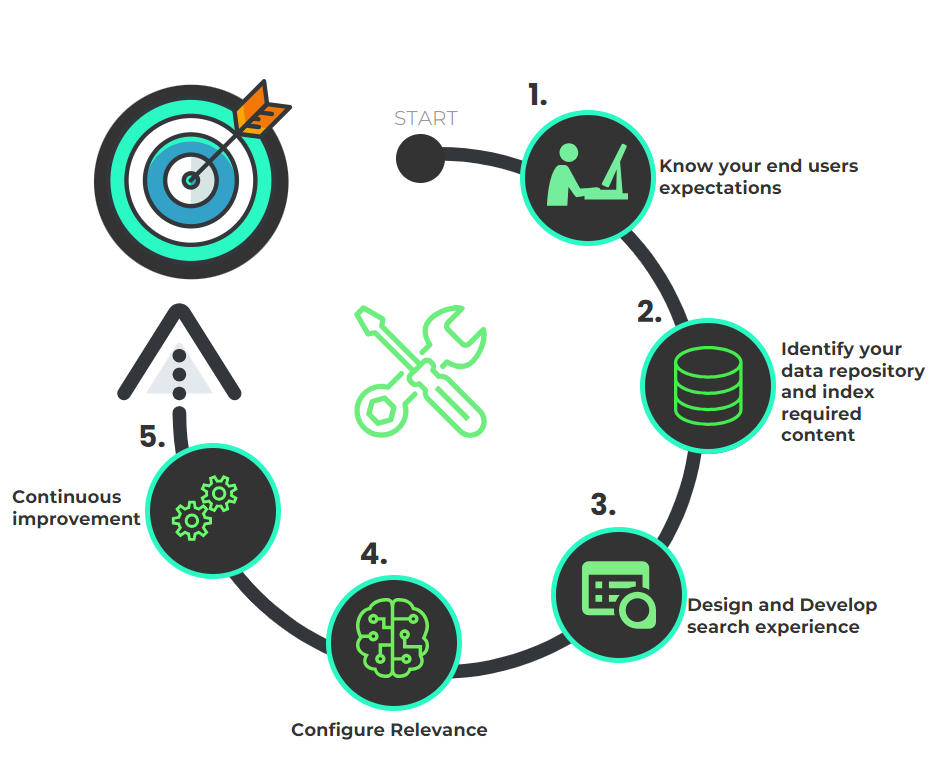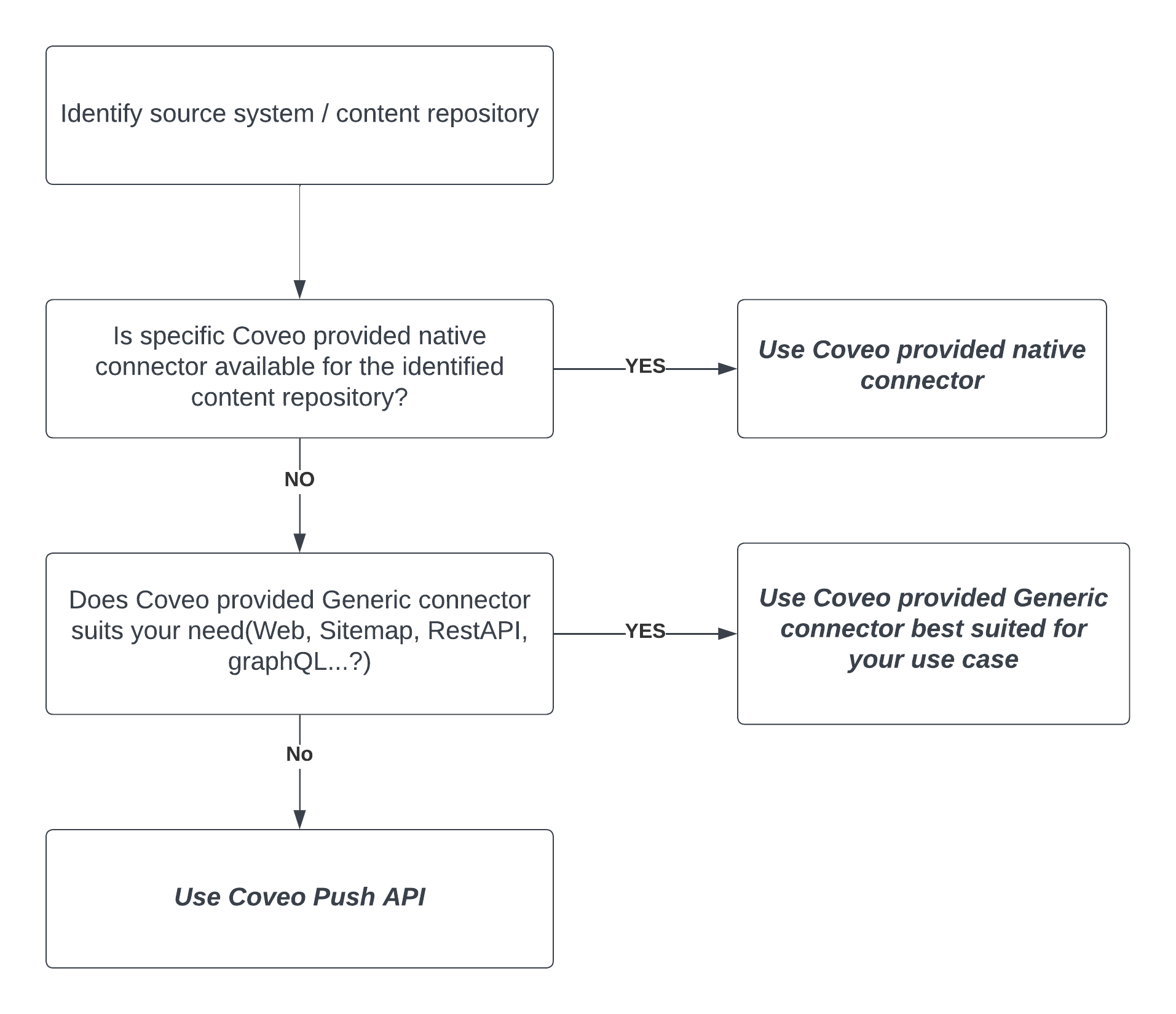Elevate Your Search Experience by integrating Coveo into AEM Cloud implementation - Part 1
 Saurabh Kumar
Saurabh Kumar
This is my first blog post in this series. I'll be sharing insights from my successful Coveo implementation I completed with AEM Cloud.
The first blog post in this series will outline key steps involved with implementing Coveo search with Adobe Experience Manager Cloud platform. This blog post will cover some technical detail but is suitable for all levels of experience.
Please note that the Coveo for Adobe Experience Manager (AEM) Cloud package is now deprecated. However, the process I describe below is still achievable with the latest versions of Coveo, AEM, and the generic Coveo connectors. In this article, I will outline the five high-level steps for implementing Coveo integration with AEM Cloud.
Coveo overview : Coveo is an enterprise-class native cloud SaaS (software-as-a-service) solution that provides a unified and secure way to search for contextually relevant content across many enterprise system.
The power of Coveo : Coveo's strength lies in its ability to utilize usage analytics data to personalize digital experiences in real-time across multiple touchpoints, including query suggestions, recommendations, search ranking, and facets.
5-Steps to implement Coveo integration with AEM Cloud
At a very high level, implementing a Coveo-powered search is a 5-step process to create an effective search solution.

Step 1: Understand your end users' expectations.
It is crucial to understand our end users and their expectations in order to design and implement an effective search experience.
The outcome of this step should be the identification of all necessary details regarding the end user and their expectations from the search system.
What are the challenges with this step?
Who are your users? (anonymous/logged in/roles)
What are their pain points, if it's an existing running application?
What content are they looking for?
How do they want to refine or filter results?
How do they find most relevant results important for them?
Step 2: Identify your data repository for indexing content.
The goal of this step is to determine which Coveo connectors will be used to index data in the Coveo platform from the source systems.
What are the challenges with this step?
Identify specific system(s) where the content lives.
Check the Connector directory and identify the relevant Coveo connector which can be consumed depending on your source system.

Step 3: Design and develop the search experience. The goal of this step is to select the best approach and create a Coveo-powered search user interface.
What are the challenges with this step?
Identify UI and UX requirements including search results cards , filters ,facets and pagination.
Choose the right approach to build Search interface depending on your designs , desired performance , UI complexity etc
Refer this documentation from Coveo – which helps to identify best approach for building Search UI based on your own use cases.
Step 4: Configure Search Relevance . The goal of this step is to utilize Coveo-powered query pipeline rules and associate the Coveo ML models, which should deliver the expected relevant contextual search experience to end users.
Relevance can be achived via configuring various Coveo Query pipleines
Result ranking rules
Query ranking expressions
Thesaurus rules
Associating Coveo query pipelines with the corresponding Coveo provided ML models: Below are few of the models which suits most of primary use cases. Refer this documentation from Coveo for full list of available models.
Automatic Relevance Tuning (ART) model : With an Automatic Relevance Tuning (ART) model, the ranking scores of items that are often opened by users making similar searches can be increased based on the current query.
Query Suggestion (QS) model : Query Suggestion (QS) model can give search term (query) completion suggestions that showed relevant results in the past.
Content Recommendation (CR) model : The Content Recommendation (CR) model can generate a list of items that have been viewed by other users in a similar context.
Step 5 : Continuous improvement. This step involves an ongoing process of adjusting Coveo pipeline rules and continuously enhancing the search experience.
Examine Coveo Usage analytics data :
to fill content gaps.
Improve / fine tune relevance to further improve search experience of end users.
Integrating Coveo with AEM Cloud can greatly enhance the search experience by leveraging machine learning and user analytics.
The five-step process outlined in this blog series provides a roadmap for planning and executing a search project, emphasizing the importance of understanding user needs and iteratively refining - search solution.
Figuring out the best relevance rules for end users can be tricky. However, it's important to know that this is an ongoing improvement process that can be adjusted based on how people use the search. This flexibility comes from regularly checking end users' search behavior, as shown in Coveo analytics dashboards.
Every project is unique, and meeting its specific requirements involves conducting workshops and collaborating closely with stakeholders to to understand how your desired outcomes can be achieved.
Stay tuned for the next part of this series where we delve deeper into the problem statement which we solved using Coveo in AEM implementation.
Further reading and references
Subscribe to my newsletter
Read articles from Saurabh Kumar directly inside your inbox. Subscribe to the newsletter, and don't miss out.
Written by

Saurabh Kumar
Saurabh Kumar
Solutions Architect I Digital Platforms